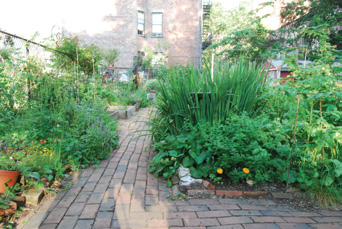Description + function
Residents who know one another will be more likely to turn to each other for support during an emergency. This becomes especially critical if they shelter in place.
Develop infrastructure to support community engagement and interaction. Set aside common space for posting information, convening meetings and hosting parties and other group activities.
Strategy into action
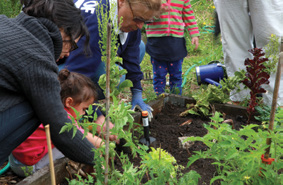
Build a sense of community by hosting events for residents, such as:
- Social gatherings such as building picnics, block parties, movie nights or meals in a community room.
- Youth activities.
- Maintain communication with residents through a facility newsletter or a notice board where announcements and flyers can be posted.
- Community gardens allow residents to exercise, enjoy the outdoors, build community ties and have healthier food options. This is especially effective in urban “food deserts”. Consult a gardening professional or non-profit organization to navigate zoning and soil contamination issues.
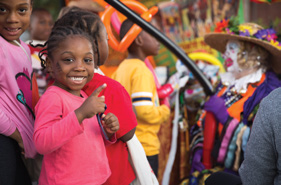
Building a sense of community among residents is a starting point, but also encourage strong ties to the larger neighborhood, including local police and fire departments, social service agencies, faith-based organizations, medical clinics, service providers and other organizations.
- Keep an up-to-date contact list for important service providers. Post paper copies of this information in key locations. Keep an up-to-date electronic version of the contact list and ask staff to add key contact numbers to their cell phones.
- Coordinate with residents to invite police, firefighters, agency staff and other service providers to building social functions.
- Many community-based organizations have civilian volunteers trained in disaster preparedness. Encourage staff and residents to join your local disaster preparedness group, or consider launching one.
- Conduct a building walk-through with residents, building owners and property staff to show the building’s green features and operations, maintenance, and emergency procedures.
During an emergency, residents must be able to communicate with loved ones. Ensure that at least one land line telephone is available. If your facility has reliable back-up power, consider hosting a cell tower. Personal solar charging units are an inexpensive option for maintaining connectivity during extended power loss. Placing cables underground or hardening above-ground cables can minimize service loss.
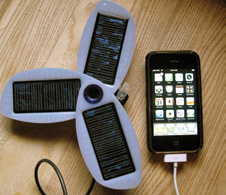
A personal charger for cell phones.
Image: Alan Levine.
|
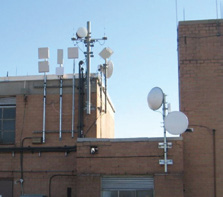
Cell providers usually pay monthly rent for building roof space. Get residents’ permission before agreeing to install a tower.
Image: Andy Padian.
|
Operations + maintenance
Keeping contact information up-to-date reflecting staff changes. Sharing these activities with other housing or community service organizations can build closer ties.
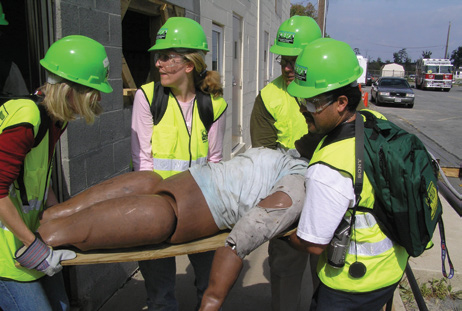
Estimated cost
- $
- $$
- $$$
- $$$$
Supporting strategies
Resources
- A Whole Community Approach to Emergency Management: Principles, Themes and Pathways for Action, FEMA, 2011. www.fema.gov/es/media-library/assets/documents/23781
- Neighborhood Empowerment Network: Empowered Communities Program, San Francisco. empowersf.org/ecp/
- Ready to Respond: Disaster Staffing Guide, Resident Engagement. businesscontinuity.enterprisecommunity.org/roles/resident_engagement_team_leader
Background
Established in 1978, the Clinton Community Garden occupies a former junkyard in Hell’s Kitchen on the west side of Manhattan. The front garden is open to the public and maintained by volunteers. The back garden, open only to those with keys, has 108 plots assigned to community members on a first-come, first-served basis. Composting facilities are also available.
Strategy
Garden members include young professionals, middle-aged and elderly residents, from a range of ethnic and economic backgrounds. School groups come to learn about urban agriculture, adding to the strong sense of community.
Because the garden was a brownfield site, members regularly test the soil for lead and have lessened previous soil damage.
Cost
The garden is maintained by volunteers and does not charge for plots. It is funded by city grants, the sale of merchandise, commemorative bricks and contributions.
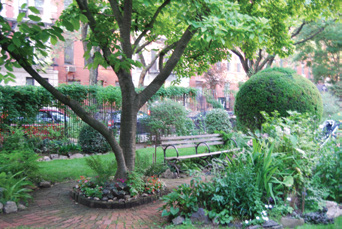
The front garden contains ornamental plants, lawns,
and features an apiary.
